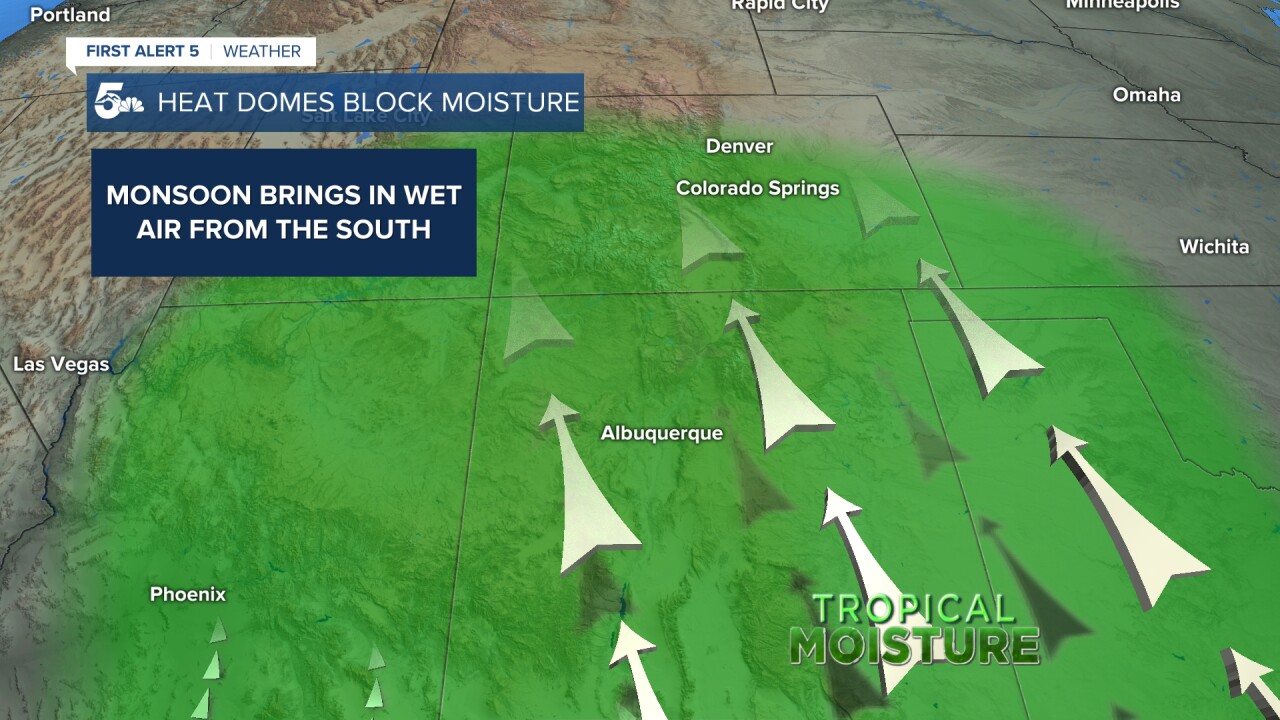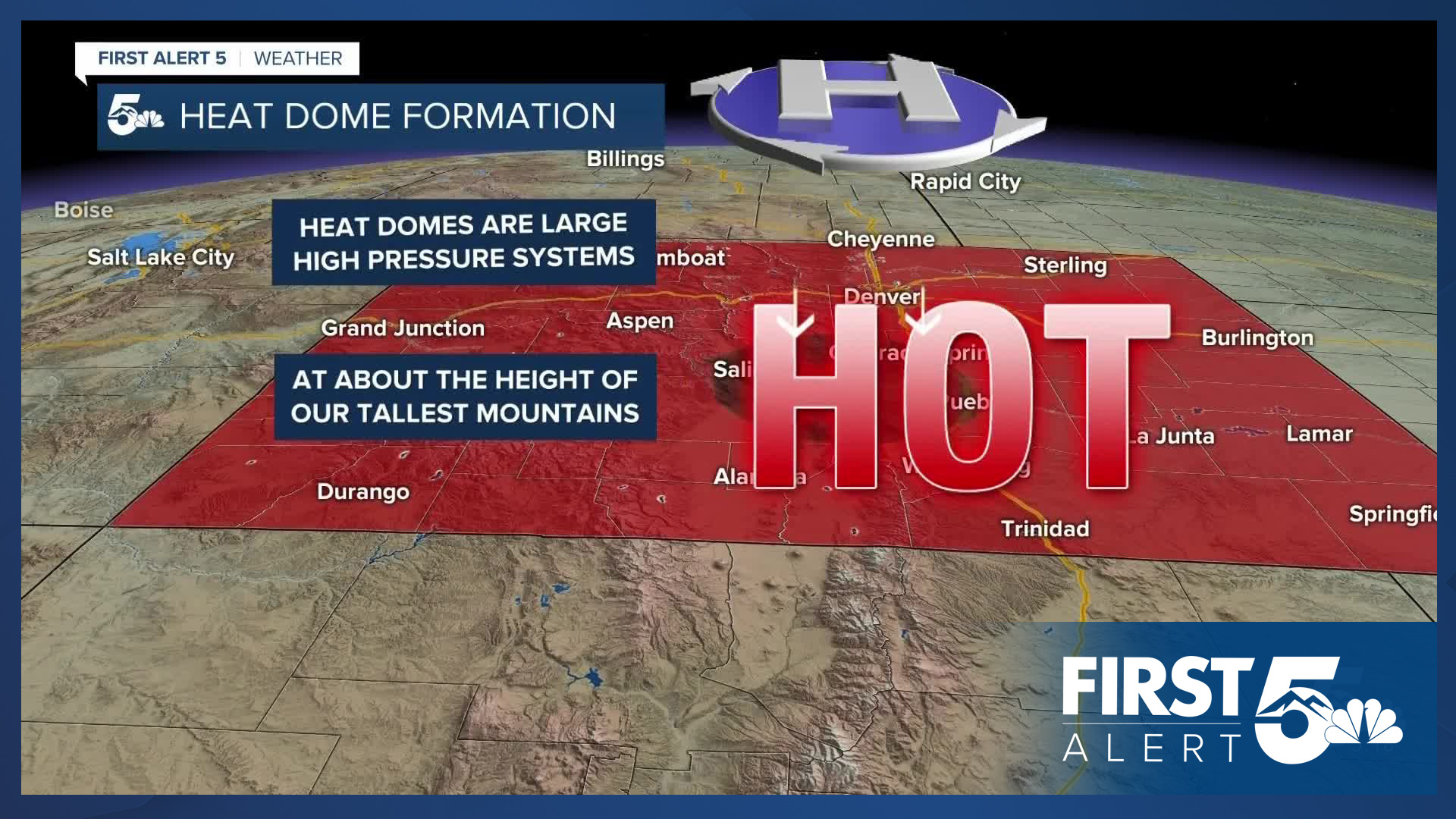Each summer in Colorado we track two main weather patterns. Large regions of high pressure called heat domes and the monsoon, which gives us storms and cooler than average temperatures.
The balance of these patterns ultimately determines whether we're hot and dry with high fire danger or wet and stormy.
Even though Colorado isn't Las Vegas or Phoenix, it's important to pay attention to the heat. In 2023, Colorado Department of Public Health and Environment reported 13 heat-related deaths, 474 emergency room visits, and 51 hospitalizations in the state.

Heat domes give us those hot and dry days. A heat dome is a massive dome of high pressure that's high in the sky, a bit higher than our state's tallest 14,000-foot peaks. These domes are hundreds of miles wide, and they tend to park themselves in place. To be clear: not every high pressure system is a "heat dome", but long-lasting stagnant highs tend to self reinforce. These are what are typically referred to as heat domes.

Heat domes amplify the risk of heat illness and fire danger because they cause air to sink. That means skies are clear which keeps the powerful summer sun at full blast throughout the day.

Heat domes press pause on our summer monsoon in two ways. Remember, the monsoon is a big flow of wet air coming in from the south that produces widespread storms.

Heat domes act like a lid. The downward force from the high pressure pushes down on storms that try to form underneath them. These highs change the wind direction to the west, which is dry.
So the balance of these high-pressure systems with the monsoon determines whether we're hot and dry or stormy and wet. This summer so far, the monsoon has won out for us, with heat domes more of an issue for our friends further east.
This story was reported on-air by a journalist and has been converted to this platform with the assistance of AI. Our editorial team verifies all reporting on all platforms for fairness and accuracy.
____
Have a question or story idea you would like the First Alert 5 Weather team to consider? Email: weather@koaa.com
Watch KOAA News5 on your time, anytime with our free streaming app available for your Roku, FireTV, AppleTV and Android TV. Just search KOAA News5, download and start watching.




